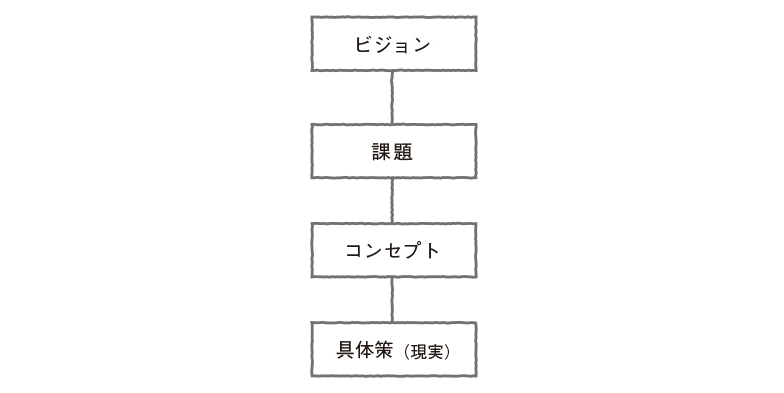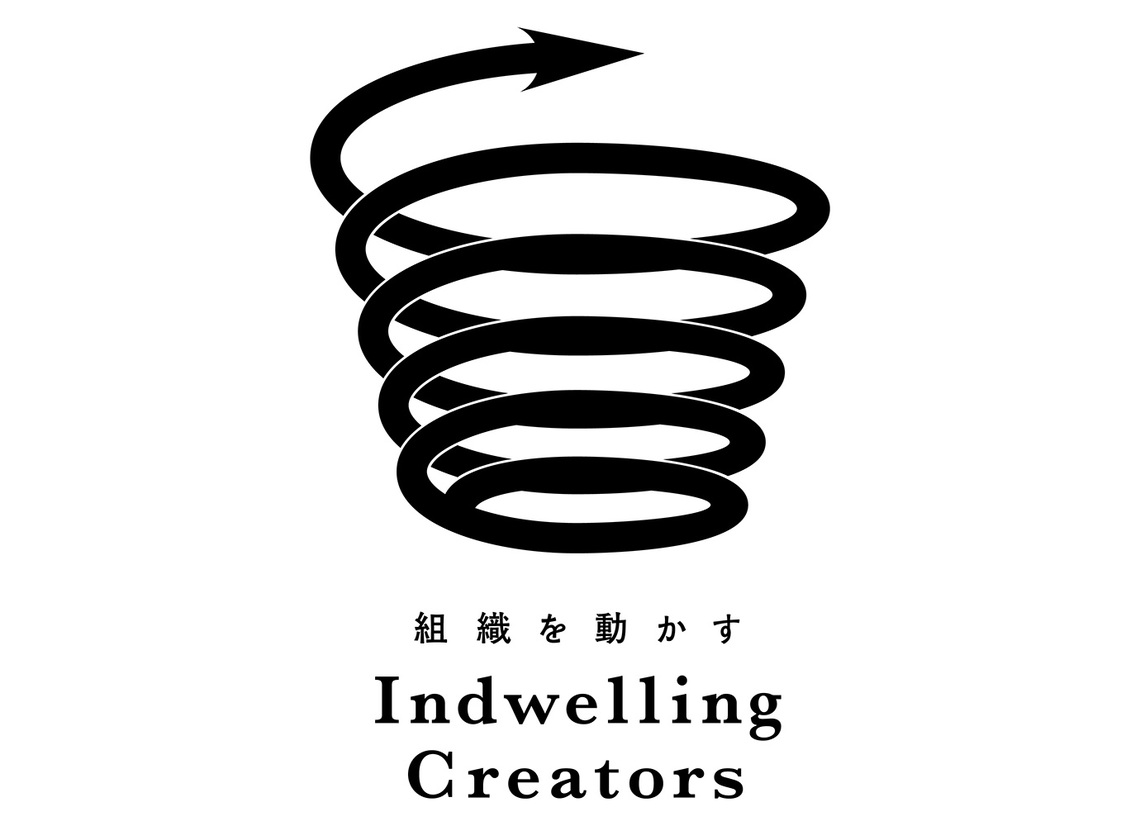Happy New Year.
Now, in this first installment of the year, I'd like to reflect a bit on the past while also revisiting the concept of "concept."
To achieve innovation and obtain concepts that make you exclaim, "Why didn't I think of that?", it is effective to intentionally create three major types of "fluctuations" and harness their power.
One is the "fluctuation" between the "concrete measures (reality)" at hand and the organization's "vision."
My old dictionary doesn't have an entry for "fluctuation," but the explanation for "fluctuate" includes: ① the sound of objects like balls touching each other ② swaying ③ the foundation of something becoming unstable and precarious.
Meanwhile, the definition of "gap" includes: ① a crack, opening, or space; ② a separation, discrepancy, or disparity. In other words, while "gap" implies a static state, "fluctuation" inherently carries an unstable, dynamic nuance.
Here, the strategy is to deliberately create a state where "the foundation of things becomes unstable and shaky" by presenting a "realistic idealism (vision)" that truly shakes the reality of the situation.
Fuji Xerox once ran a campaign titled "From Frenetic to Beautiful." While some praise this as "advertising that resonates with the spirit of the times," that alone seems insufficient.
The essence of this ad lies in how it shook everyone involved, centered on Fuji Xerox's frontline staff, prompting them to start thinking: "Even the 'Mōretsu' values we've always taken for granted have their limits," and "What exactly is a beautiful way of living or doing business?" It can be seen as intentionally creating a "fluctuation" (not a static, hopeless "gap") that, if tackled proactively, seemed solvable, thereby seeking innovation.
The second type of "fluctuation" can be created between the "target" and the "product/service." Questions like "Consumers with unprecedented values are emerging. What now?" or "What new customer experiences can we create with this technology?" exemplify this. This is probably the most commonly used perspective for "shaking things up."
The "Cross Frame," repeatedly introduced in this column, synthesizes these two dynamics essential for innovation. Keeping this structure in mind prevents getting lost when creating concepts.
However, there's another "disruptive" point the Cross Frame doesn't cover: "fluctuation among organizational members."
Fundamentally, a "concept" as a new perspective that breaks conventional wisdom cannot be born solely from analyzing the "objectivity" bound by existing norms. It must always start from an individual's "subjectivity." The "fluctuation" among members, each possessing different experiences and values, is also a major driving force for innovation.
This is precisely why it has become common practice to form project teams with diverse members from across departmental (functional) boundaries. In such cases, the leader's true skill lies not in gathering similar members for a safe approach, but in assembling a team with distinct personalities.
In fact, for the final assignment in my current Meiji Gakuin University (Business Administration) course—"Develop a new business for TV Kanagawa"—students are tackling this in pairs. While working alone might be easier for them, I carefully assessed each student's individuality through lectures and interactions over the past year since April last year. I then deliberately formed the teams, considering various synergies. I'm eager to see what outcomes this challenge will yield.
The path of least resistance is usually the most comfortable. That's precisely why, to spark innovation that breaks away from it, leaders must shake things up for their team members. Understanding the "three areas of fluctuation" – ① Reality and Vision, ② Target Audience and Product/Service, and ③ Relationships Among Team Members – allows you to effectively energize your organization anytime.
Now then.
Professionals use "shake-ups" intentionally, while amateurs end up creating them "by accident." My cooking is a classic example of such amateurish work.
Even my annual New Year's feast, which I make every year, saw me completely panic on New Year's Eve this time due to poor pacing. "Huh? I have to make five dishes in three hours or we won't make it!" "Damn it! I forgot to put the pine-shaped garnish in the box in my rush!!" and so on. It was total chaos, and stable quality control was out of the question.
Still, I managed to finish in time. I truly felt the happiness of having my whole family healthy and being able to share a meal with many friends.
Please, enjoy!











